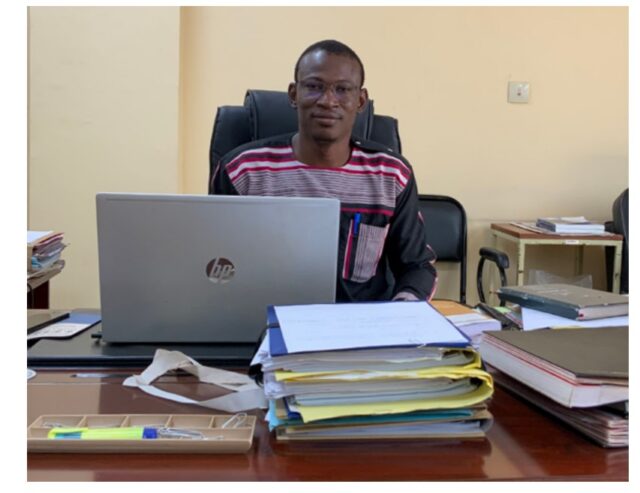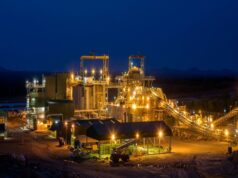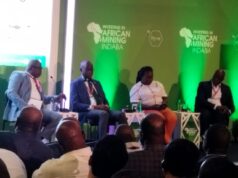Despite the security challenges Burkina Faso has faced since 2016, the mining sector remains a major pillar of the national economy. With 16 gold mines in operation and annual production of more than 50 tonnes, the country ranks among the top five gold producers in Africa, according to World Mining Data’s 2023 ranking. The Director General of Mines, Aristide Belemsobgo, believes that the mining sector is resilient and remains a major pillar of the national economy, despite the current insecurity. On the occasion of the 5th edition of the West African Mining Week (Semaine des activités minières d’Afrique de l’Ouest – SAMAO), he is optimistic about the future of the sector.
What is the current state of mining activities in Burkina Faso?
Despite security challenges, Burkina Faso has shown remarkable resilience in its mining sector. Since 2018, the country has consolidated its position as one of the top five gold producers in Africa, exceeding 50 tonnes annually from its 16 gold mines. In 2022, although some mines will remain temporarily closed, the successful reopening of mines such as KARMA and TAPARKO testifies to the authorities’ efforts to secure the sector. As for the outlook, the construction of the KIAKA mine, the OPOR project, the revival of the old POURA mine, and other mining projects under development signal a promising future for industrial mining in Burkina Faso. Geological and mining research continues despite a slowdown, with brownfield and greenfield projects aimed at boosting employment and community development. Burkina Faso is seeking to diversify its mineral resources to reduce dependence on gold and mitigate price fluctuations. Strategic minerals such as lithium, cobalt, copper and manganese are being targeted. Artisanal mining is also being reorganised and supervised with a view to formalising the sector. Artisanal sites have been defined, and action is being taken to manage mine tailings responsibly. Despite the difficulties, Burkina Faso’s geological and mining potential is attracting investors, making the country one of the most attractive in Africa for mining projects. The future of the mining sector looks promising, underpinned by the diversity of resources to be explored and developed. Burkina Faso thus retains a solid position in the African mining landscape.
What contribution has the mining sector made to the national budget over the last 3 years?
The contribution of the mining sector to the State budget in recent years has been considerable and has increased over the years, partly due to the increase in mining production and partly due to the rise in the price of gold and the dollar. In 2020, the mining sector’s contribution to the state budget was around 330 billion, rising to around 430 billion in 2021 and 540 billion in 2022 (MEMC Statistical Yearbook 2022). This makes a total contribution over three (03) years of around 1,300 billion FCFA (around 2 billion US dollars).
According to the Minister of Mines, Simon-Pierre Boussim, gold production in the mining sector fell by 13.73% in 2022. What are the sector’s forecasts for 2023?
In 2022, gold mining production has fallen (production of around 58.2 tonnes) compared with production in 2021 (production of around 67.4 tonnes). As mentioned above, this is partly due to the security situation, which led to the suspension of production at the YOUGA, NETIANA, TAPARKO AND KARMA and OUARE mines, resulting in a shortfall of around six (06) tonnes of gold. In 2023, with the resumption of certain mines and the start of full production at the BOMBORE mine (OREZONE company), production will be slightly higher than in 2022. At 30 June 2023, fine gold production was approximately 27,527 tonnes (DGMG half-yearly report, 2023). By the end of 2023, we expect total production to be around 60 tonnes.
The 2021-2022 report on the state of fraud in the marketing of gold and other precious substances indicates that around 30 tonnes of gold are smuggled out of Burkina Faso every year. What measures have been put in place to combat fraud in the mining sector?
The National Gold Anti-Fraud Brigade (Brigade Nationale Anti-Fraude de l’Or – BNAF) has been set up to combat fraud in the marketing of gold and other precious substances in Burkina Faso. The Brigade’s role is to ensure the downstream fight against fraud, which is much more perceptible in artisanal mining according to the INSD report (2016), and which can lead to money laundering or the financing of terrorism. As far as the DGMG is concerned, the fight against fraud is not one of the directorate’s major responsibilities, but it contributes to SONASP’s image, upstream in the formalisation and supervision of small-scale and semi-mechanised activities. This should lead to better control of the marketing of gold and other precious substances produced by small-scale and semi-mechanised mining.
In the current context in Burkina Faso, what are the major difficulties facing mining operators?
The major difficulty in the mining sector remains security, which has an impact on the mobilisation of financial resources to fund research projects or mining operations. However, the resilience shown by mining companies is quite remarkable, enabling the sector to make a significant contribution to government revenue and the development of local communities. One of the difficulties is the duality between artisanal and industrial mining.
What is the government doing to resolve these problems?
A number of measures have been taken by the government to resolve these problems. Firstly, as far as security is concerned, the Mining Authority began discussions with mining companies and their umbrella organisations very early on, to see what could be proposed to ensure a degree of resilience. Although securing the mines is part of an overall strategy to secure the country, some projects in areas of major insecurity have received special support from the government to strengthen security at these mines and to secure the supply convoys to these mines. In addition, reforms are underway to make the National Office for the Security of Mining Sites (Office National de la Sécurisation des Sites Miniers – ONASSIM) operational, to improve the security of industrial mining sites and to improve the security of artisanal mining. Secondly, the problem of the coexistence of industrial and artisanal mines has led the State to consider defining gold panning corridors or zones, followed by reforms that should enable the State to be closer to artisanal miners in terms of formalisation and supervision. It is for this purpose that the Artisanal Miner’s Day (Journée de l’Artisan Minier – JAM) is organised each year by the Mining Administration.
The 5th edition of the West African Mining Week (Semaine des activités minières d’Afrique de l’Ouest – SAMAO) will be held from 28 to 30 September 2023. What contribution could such an event make to Burkina Faso’s mining sector?
The 5th edition of the West African Mining Week (SAMAO), to be held from 28 to 30 September 2023, is, as in previous editions, a forum for players in Burkina Faso’s mining sector to share experiences with their counterparts in other countries. It is also a showcase for promoting Burkina Faso’s mining sector and reassuring investors that Burkina Faso can be visited, that it is an investment destination, given its geological and mining potential and its experience in research and mining.
What conclusions or recommendations can we hope to draw from this event to boost mining activities in Burkina Faso?
The main theme of the 5th SAMAO is “Mining in Africa: What strategy for impacting local economies”, and strong recommendations are expected for a better contribution from the mining sector to the development of local communities. It is clear that most African countries rich in natural resources have deemed it necessary to define a community development fund, but clear mechanisms need to be defined to ensure that this fund has a greater impact on local economies. The best impact of these funds is to have a knock-on effect on other sectors of the local economy, making a greater contribution to the sustainability of investments, the development of local initiatives, and the fight against poverty, insecurity, unemployment and the integration of women. In addition to these funds, small-scale mining initiatives in the form of cooperatives or associations may be an alternative way of ensuring the development of local economies. In short, this 5th edition of SAMAO does not come to define miracle solutions for a better impact of mining on local economies, but puts the debate on the table for concrete solutions applicable to countries rich in natural resources whose challenges are convergent.
What is your message to participants in the 5th edition of West Africa Mining Week?
I would like to wish all those taking part in the 5th SAMAO a successful event. The various sub-themes defined in sessions, panels and workshops should enable everyone to get the most out of the event. While the exhibitions and B2B sessions will ensure that participants have the opportunity to share experiences and do extraordinary business in a hospitable country in the heart of Africa.
Sidebar
Functioning of the Directorate-General for Mines and Geology (DGMG)
According to decree no. 2023-0255/PRES-TRANS/ PM/MEMC of 21 March 2023 on the organisation of the Ministry of Energy, Mines and Quarries (Ministère de l’Energie, des Mines et des Carrières – MEMC), the General Directorate of Mines and Geology (DGMG) is responsible for designing, drawing up, coordinating and implementing the Ministry’s policy in the field of mines and geology. As such, it is responsible for :
- weighing and packing gold, other precious substances and base metals;
- collect, process and compile geological and mining data;
- monitoring and controlling the search for, construction, operation and closure of mines;
- Monitor the social, environmental and economic impact of projects involving mining substances;
- take part in public environmental enquiries into mining projects;
- monitor the implementation of action and resettlement plans;
- valuation of mining claims ;
- help ensure compliance with regulations on the import, export, transfer, transit, manufacture, storage, transport and use of explosives for civil use in mines;
- monitor and control the implementation of health and safety rules in the mines;
- help monitor mediation and issues relating to mine site security;
- ensure compliance with regulations
- issue technical opinions;
- processing applications for exemptions and ordinary temporary admission for imports of mining goods and equipment
- validate lists of mining equipment and materials;
- monitor and control refineries, counters and jewellery stores;
- process applications for authorisation from refineries, jewellers and marketing outlets for gold and other precious substances produced by traditional and semimechanised means [1]
- supervising artisanal and semi-mechanised mines;
- monitor and control rehabilitation activities at artisanal mining sites
- ensure the protection, safeguarding and restoration of the environment in collaboration with the relevant State bodies;
- monitor mining funds relating to the rehabilitation and closure of mines and artisanal mining sites
According to Order No. 2021-262/MEMC/SG/DGMG of 23/09/2021, the Directorate General of Mines and Geology (DGMG) is made up of four (04) technical directorates:
- Geology Department (DGéol)
- Industrial Mining Department (DM)
- Artisanal and Semi-Mechanised Mining Department (DEMAS)
- Regulatory and Production Monitoring Department (DSRP);
- Department for Monitoring the Rehabilitation and Closure of Mines and Artisanal Sites (DSRFM). Each technical department is organised into services
This article was excerpted from the magazine Spécial #SAMAO2023
Download the entire magazine at this link:
#Mines_Actu_Burkina










